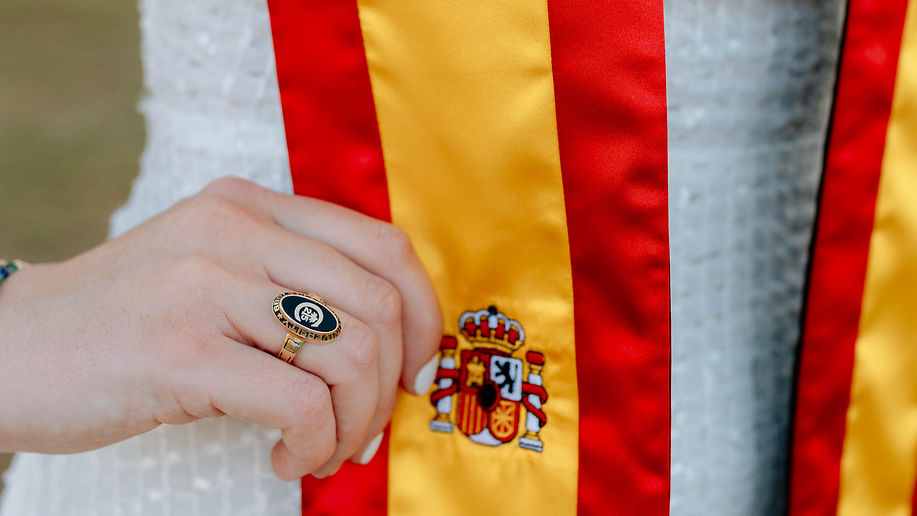
Coursework
Cultural Heritage Essay
I wrote this paper for my Cultural Heritage of Spain class during my semester abroad in Toledo, Spain. For our first paper of the semester, my professor had us write about something that pertained to the city’s history and culture. I chose to explore the significance of a monastery, San Juan de los Reyes, to Toledo’s history. Our professor challenged us to visit our chosen site, so I did a self-guided tour through the church before I wrote about it. This assignment strengthened my ability to analyze how history impacts present day culture. I developed more cultural competence by visiting the site and seeking to understand the significance of the building’s history in Toledo. This artifact demonstrates my ability to understand and apply history and culture to a broader viewpoint.
Literature Review: Vargas Llosa
This artifact is an analysis on the life and works of Peruvian author and journalist Mario Vargas Llosa. I explored the life of Llosa as well as his inspirations and influences on his writing. Towards the end of my essay I analyze one of his most well-known works, Los Cachorros, which explores themes of generational hate and revenge, as well as the passing of time. This project stretched my spanish writing skills as well as challenged me to do a literary analysis in my target language. I learned a lot about Vargas Llosa and the significance of his life and works to the Latin American readers. A valuable addition to my portfolio, this essay displays my writing, interpretation, and critical thinking skills in my target language.
Comparación entre las obras de Cortázar
This is a reflection that compares different works between Julio Cortázar. The two works I compare are La Noche Bocca Arriba and Casa Tomada. Both of these works by the french and argentinian author are very well-known in the literary world. This artifact is beneficial to my portfolio because it showcases my understanding of the significance of these works, as well as my writing skills. This piece is helpful to my career path because it broadens my writing skills in my target language. This will help strengthen my communication skills as I pursue a career in healthcare and administration.
Childhood Obesity in Latinos in the United States
This artifact is a research paper completed for SPAN 4190: Health and Hispanic Community. The assignment focused on exploring childhood obesity in U.S. Latino communities through a socio-ecological lens. My paper investigated the social determinants of health (SDOH) affecting obesity prevalence and reviewed evidence-based public health interventions tailored for this population. This project deepened my understanding of how socioeconomic, cultural, and policy-level factors shape health outcomes. I sharpened my critical thinking through source evaluation and applying the socio-ecological model. One major challenge was synthesizing diverse academic and governmental sources in Spanish, which I overcame by organizing content thematically and using credible translation tools.
This experience strengthened my foundation in public health research and reinforced my commitment to addressing health disparities. The skills I gained—particularly in evidence-based analysis and cultural competency—will guide my future work in community health and help me advocate effectively for health equity in underserved populations.
Health and Well-Being in Bolivia
My final paper for Global Health is an analysis of the health and well-being of Bolivia. In this paper I explore the current healthcare and health services situation in the country, as well as offering recommendations for how to improve the system. This artifact demonstrates my understanding of global health and ability to analyze another country’s healthcare system.
Toccoa Windshield Tour
This artifact is a community health observation project called the Toccoa Windshield Tour, completed for the course HLTH 3500: Rural Health. The assignment involved a visual assessment of the built environment and public health resources in Toccoa, Georgia, with a focus on how they impact the health of local populations. Our goal was to identify health-promoting or health-limiting factors in the community. This experience taught me how environmental and social conditions influence health outcomes. I improved my observational analysis and critical thinking by connecting what I saw—like access to grocery stores, housing, and healthcare facilities—to health disparities. One challenge was translating community observations into actionable insights, which I overcame through team discussion and reviewing community health frameworks. This project reinforced the importance of community-based research in identifying public health needs. In my future career, I’ll use these skills to design interventions that are culturally sensitive and geographically relevant, especially in underserved communities. It also prepared me to advocate for equitable access to health resources using real-world data.